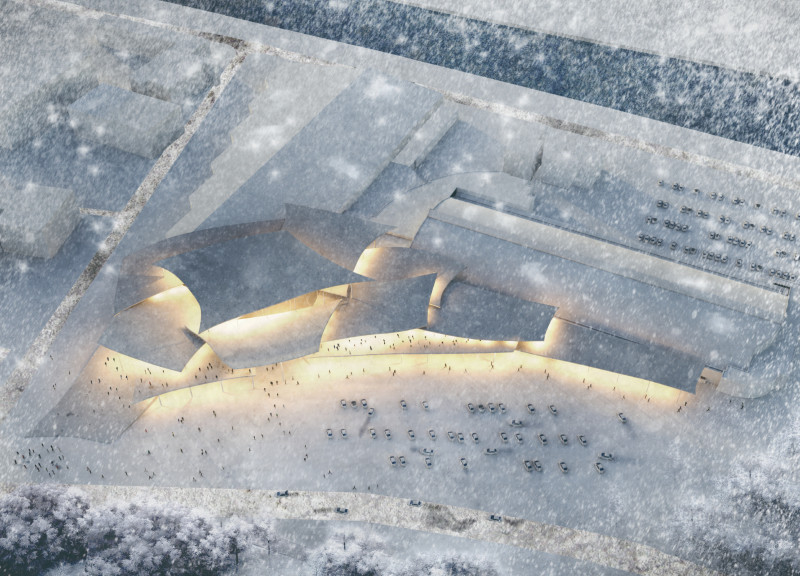5 key facts about this project
The architectural design situated in Riga, Latvia, offers a convention center that connects with the region's rich cultural background. The building is intended for multiple uses and features adaptable spaces suitable for a variety of events. It draws inspiration from traditional Latvian architecture, ensuring a harmony between the new design and the area's historical buildings.
Conceptual Framework
At the core of the design is the idea of "Fallen Leaves," which represents the relationship between nature and the built environment. This concept emphasizes the structure's function as a protective space while maintaining a connection to its surroundings. The design references traditional Latvian houses, which are known for their overhanging roofs. These roofs not only provide shelter but also enhance the experience for those inside.
Spatial Organization
The layout is organized to include a range of essential spaces. Among them are an auditorium hall, small conference room, management office, exhibition space, café, waiting room, terrace, cloak area, information zone, restrooms, foyer, and parking area. This collection of spaces encourages movement and interaction, allowing the center to serve as a lively venue for various gatherings and activities.
Materiality and Aesthetic Considerations
Although specific materials are not directly mentioned in the presentation texts, the design hints at the use of natural and sustainable elements that align with its themes. Timber may be used to reflect traditional construction methods, while glass might provide transparency and foster connections to the outdoor environment. Such choices are expected to support the building’s integration with both its natural and built surroundings.
The roof serves as a prominent design feature. It mimics the appearance of falling leaves and creates a covering that enhances the building's profile against the sky. This thoughtful approach invites natural light into the spaces below, enriching the interior experience and strengthening the bond between those inside and the outside world.


























